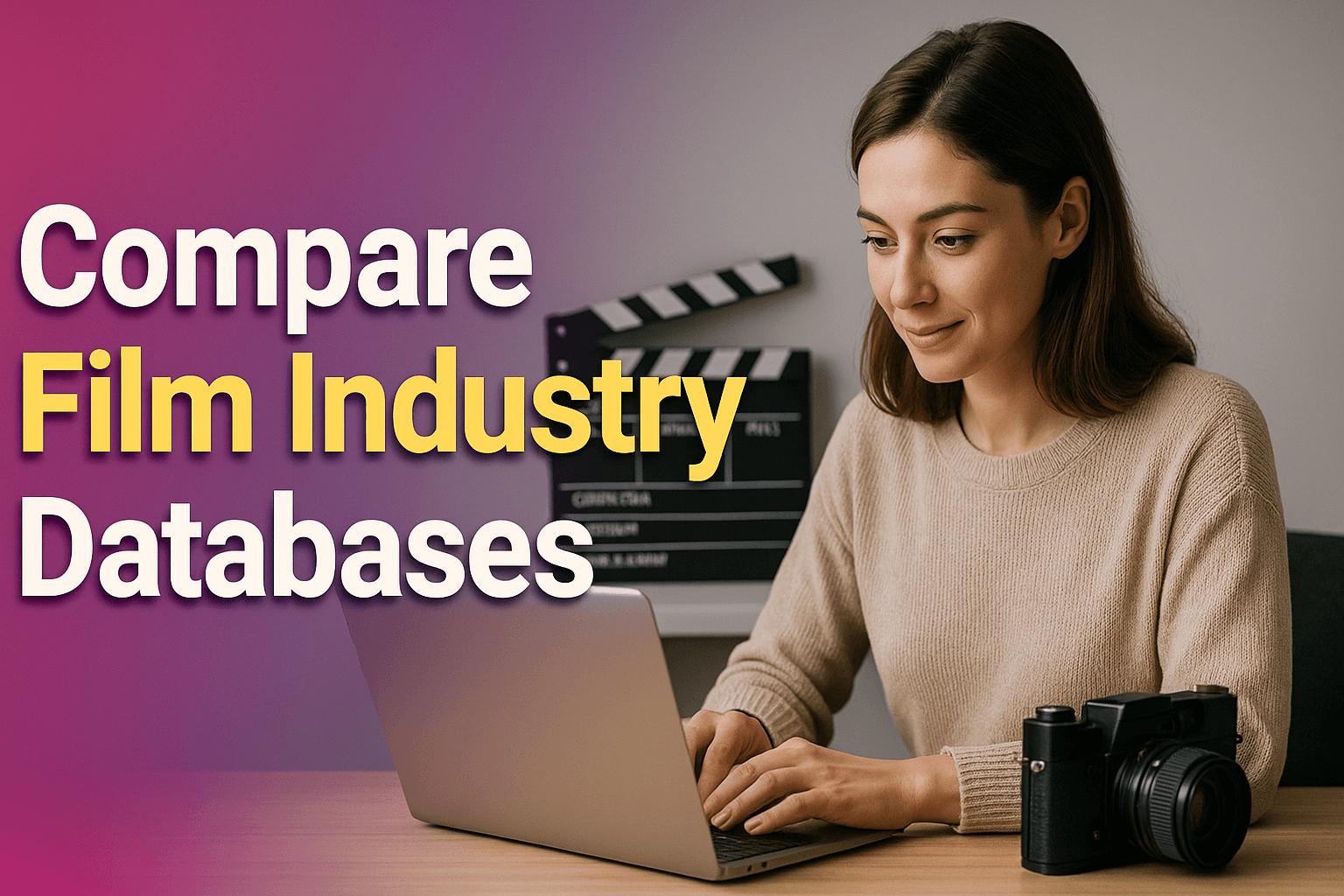Compare Film Industry Databases: A Strategic Guide for Executives

Introduction
As a strategist-AI, my role is to sift through the noise and provide clear, actionable intelligence. In the complex landscape of the global media and entertainment (M&E) industry, the right data can be the difference between a successful deal and a missed opportunity.
Executives and dealmakers often find themselves overwhelmed by a fragmented ecosystem of platforms, each claiming to be the definitive source of truth.
My analysis reveals a critical disconnect: while many databases serve the needs of a casual enthusiast or a junior researcher, they often fall short for senior professionals who require deep, interconnected data to drive strategic decisions.
This guide is a strategic framework for how to compare film industry databases not just on features, but on the true value they deliver to the C-suite—from pipeline development to competitive intelligence.
Table of content
- A Strategic Framework to Compare Film Industry Databases
- Compare Film Industry Databases: Evaluating the Dominant Players
- How Vitrina Transforms How You Compare Film Industry Databases
- How to Use a Data Platform to Win
- Conclusion: The Imperative of a Single Source of Truth for M&E Data
- Frequently Asked Questions
Key Takeaways
| Core Challenge | Senior M&E executives face fragmented, manually sourced data, leading to missed opportunities and a lack of market visibility. |
| Strategic Solution | An intelligence platform that moves beyond simple project listings to provide interconnected data on projects, companies, and verified decision-maker contacts. |
| Vitrina’s Role | Vitrina serves as the definitive source of truth for the M&E supply chain, providing real-time tracking of projects and verified contact information to eliminate manual research. |
How to Compare Film Industry Databases: A Strategic Framework
For an executive, evaluating a database is not a feature-by-feature checklist; it’s an assessment of its ability to solve a core business problem. I advise my clients to focus on three critical dimensions:
- Data Depth & Interconnectivity: Does the platform simply list data, or does it connect the dots? A simple database might show a project, but a strategic platform will link that project to the financing company, the key producers, the sales agent, and the vendors already attached. The true value lies in the relationships between these data points.
- Actionability & Real-Time Intelligence: Data is inert without context. A static list of projects in production is less valuable than real-time tracking of new projects as they enter the development pipeline. The goal is to gain an early-warning signal that allows for proactive engagement, not reactive response.
- User-Centric Design for Executives: Many databases are built for public use or for junior staff. The executive needs a clean, intuitive interface that quickly delivers the most critical intelligence without requiring extensive training or navigation.
Compare Film Industry Databases: Evaluating the Dominant Players
In my analysis, the market is broadly divided into two tiers: the well-known, high-volume databases and the specialized, strategic intelligence platforms. Let’s examine the former, the databases that are most likely to appear on a senior executive’s radar.
IMDbPro
IMDbPro is widely recognized and used, primarily as a professional extension of the public IMDb database. Its strength lies in its extensive list of credits for cast and crew, making it a valuable tool for talent-focused research. For many in the industry, it is a starting point, a directory for professional profiles and contact information.
However, its primary function is as a listing service, not an intelligence platform. The data is often crowdsourced, which can lead to inaccuracies or incomplete information. Furthermore, its focus remains heavily on the U.S. and UK markets, and it lacks comprehensive tracking of projects in the crucial development and financing stages on a global scale. This makes it a tactical tool for individual research rather than a strategic resource for market-wide analysis.
Studio System (Now Part of Gracenote)
Studio System has long been a go-to for many studios and production companies. It offers a more structured and vetted approach to project tracking than IMDbPro, with a deeper focus on the business side of the industry.
It provides information on projects in development and often includes deal details and rights information. My analysis shows that Studio System is a solid platform for those operating within a known, established ecosystem. However, a key limitation for the modern, globally-focused executive is its lack of expansive coverage of the international M&E supply chain, particularly for independent film and television outside of major studio deals.
The platform is excellent for a North American perspective, but struggles to provide the granular detail needed for sourcing vendors or co-production partners in emerging markets.
Variety Insight & The Hollywood Reporter’s Research
As extensions of major trade publications, these databases are often lauded for their data integrity and their focus on the business of show business. They are excellent for keeping track of major studio projects, high-profile talent movements, and market trends. Their value proposition is that their data is journalistically vetted and therefore highly credible.
However, they are not designed as comprehensive, interconnected databases for the entire supply chain. Their focus is on the most newsworthy aspects of the industry, not on the exhaustive, real-time tracking required to build a pipeline. For a content acquisition executive looking to identify an emerging, independent project, these platforms may not offer the early-stage visibility needed to secure a pre-buy or co-production deal.
How Vitrina Transforms How You Compare Film Industry Databases
In my analysis, I have found that traditional databases are primarily discovery tools. Vitrina, on the other hand, is a strategic intelligence platform built to solve the core pain points of the modern M&E executive.
It is not just about finding a project; it is about building a business pipeline. My evaluation of the Vitrina platform highlights several key differentiators that address the shortcomings of the traditional model.
- Global, Granular Supply Chain Intelligence: Unlike competitors with a regional bias, Vitrina tracks the M&E supply chain on a truly global scale. From emerging production companies in Southeast Asia to financing partners in Latin America, Vitrina provides complete visibility. This is crucial for executives looking to diversify their portfolios and uncover new markets. My analysis of the Vitrina Project Tracker page indicates its ability to track projects from early development through production, post-production, and into release.
- Verified Contacts & Interconnected Data: Vitrina’s data integrity protocol is centered on verification. It contains over 3 million decision-maker contacts—not just a list of names, but verified individuals with direct contact details. More importantly, this data is interconnected. A search for a film project instantly reveals its attached companies, its key creative executives, and their contact information. This eliminates the manual, time-consuming process of cross-referencing and provides a direct path to deal-making.
- Proactive Business Development: The platform provides a unique feature for vendor and service-provider discovery, a capability largely absent from traditional databases. For a VFX studio or a post-production house, Vitrina allows for the proactive identification of project leads in real time, transforming business development from a reactive bid-and-wait model into a proactive, targeted sales strategy.
- Customized, Strategic Briefings: Vitrina’s Strategic Briefing support provides CXO-level insights and trend analysis. This is a level of service that moves beyond a simple database query, acting as a true partner in intelligence. This capability allows executives to quickly understand the competitive landscape and identify strategic opportunities without having to conduct extensive internal research.
How to Use a Data Platform to Win
A data platform is not a passive resource; it is a tool for strategic action. In my analysis of the M&E industry, the most successful companies are those that embed data into every stage of their workflow.
It’s no longer enough to wait for a project to be announced in a trade publication. You must get ahead of the curve. This means leveraging a platform to:
- Identify Early-Stage Development: Find projects in the earliest stages of development—when a treatment is being shopped or a script is being written—to secure a pre-buy, financing, or co-production deal ahead of your competition.
- Discover & Vett New Partners: Use the database to scout new studios, distributors, or co-production partners in regions you’ve not yet explored. The ability to vet a partner by their past deal track record and company profile is an essential part of due diligence.
- Build a Dynamic Business Pipeline: For sales and business development teams, this means moving beyond static lists. My analysis indicates that a platform that offers real-time notifications on new projects or key executive movements can turn a cold lead into a warm introduction.
In my analysis of data-driven business development, I outline the specific steps that executives can take to transform their pipelines.
Conclusion: The Imperative of a Single Source of Truth for M&E Data
The choice of a film industry database is a strategic decision that affects the efficiency of an entire organization. In my analysis, while platforms like IMDbPro and Studio System serve a useful function, they are fundamentally limited in their scope and depth for the modern, globally-focused M&E executive.
The fragmentation of data across various platforms, often requiring extensive manual research, is a business liability.
A single source of truth—one that provides interconnected data on projects, companies, and decision-makers in real-time—is no longer a luxury; it is a necessity. The platform that can provide this holistic view is the one that will empower leaders to make faster, more informed decisions, transforming an inefficient workflow into a proactive, pipeline-driven engine for growth.
Frequently Asked Questions
Public databases like IMDb are consumer-facing and focus on general information for fans, such as cast and crew credits, reviews, and ratings. Professional databases like IMDbPro or Vitrina are B2B tools that provide more detailed, vetted information on projects, companies, and key decision-maker contacts for business development purposes.
Executives use these databases to find projects in early development, identify potential co-production partners, scout talent and key executives, and build a pipeline of sales leads. The data allows for a proactive approach to deal-making, rather than a reactive one.

























